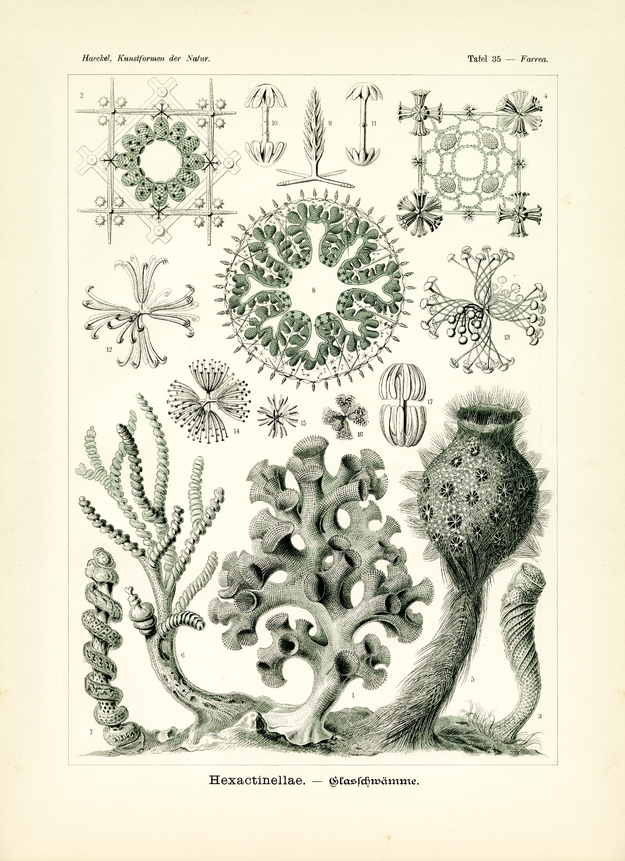Translation of the original German introduction by Ernst Haeckel:
Phylum of Spongiae (Schwämme); - subclass of Silicispongiae (Kieselschwämme); - order of Hexaetinellae or Hyalospongiae (Glasschwämme).
Hexaetinellae or six-jetted ‘Silicic Spongiae’ are distinguished from the other Spongiae animals by the formation of a delicate silicic skeleton with the primary components being six-radiant Spicula or needles. The geometric basic form of this tender silicic formation is similar (word in the German text missing) to the shape of the axis star of a cube or the regular Octahedron: three uniform axes that intersect at right angles (like the three axes of the regular crystal system). At times these axes remain at the same length, at times one or several are extended or shortened, branched or split. At times the point of each individual radiant is replaced by a brush-like bunch of needles (fig. 12-17). Each radiant can carry a small disc or star at its free end (fig. 13, 14). Within the soft living Spongia body usually thousands of such delicate silicic formations are shaped into a multiply shaped structure that is similar to a piece of art made of glass. Within the suborder of Lyssacineae the connection of the spikes within the soft tissue remains loose; most of the spikes are loosely sticking in the ocean floor with the help of a tuft (so Euplectella and Holtenia, fig. 3 and 5). In the suborder of Dictyoninae that are usually grown firmly onto the seabed, however, the connection of the needles develops into a rigid frame through the process of connation (so Farrea, fig. 1 and 2, and Sclerothamnus, fig. 6 and 7). It is not just the highly manifold shape of these silicic frames that is delicate and regular in the Hexaetinellae, but also organization and shape of the water canals which pervade the sponge body, and the flagellum chambers that are grouped around the canal in the form of radiants (fig. 2, 4, 8). The impressive colony (or Cormus) of Hyalospongiae is usually composed of numerous small colonies (or Cormidia), and these again of many flagella, the actual individuals or personae of the sponge.
Translation by VR Translators Bangalore
We've scanned the original lithography at 1200dpi on the Epson A3 scanner of A3 scanner huren. You can download a 400dpi JPEG here.
